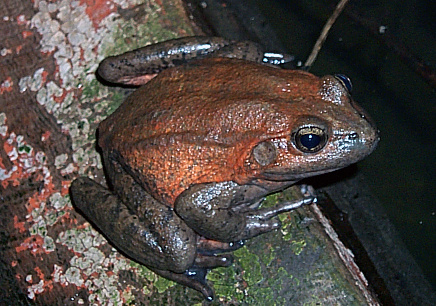Here’s to more Frogtowns in California, now that the state has declared an official state amphibian: the California red-legged frog, a species that could use a little help when it comes to habitat, health and environment.
Gov. Brown signed signed the bill into law June 28; we appreciate that the proposal for a state amphibian came originally from an after-school club at Sea View Elementary School in Salton City. Third grade students suggested the designation in a letter to Assemblyman Manuel Pérez, D-Indio which started the ball rolling.
Right now, California has a state animal (grizzly bear), state marine mammal (California gray whale), state insect (dogface butterfly), state fish (golden trout), a state marine fish (garibaldi), state bird (California quail) and state reptile (desert tortoise). Yes, amphibians now join these illustrious ranks.
The rare red-legged frog is a state species of special concern and lives in a watery world across the state, mainly in Central and Northern California. There are a few pockets of them found in SoCal. Earlier this year, herpetologists discovered a small population of these hoppers the Simi Hills area – these frogs (the largest native frog in the Western United States) haven’t been seen in the neighborhood in four decades.
With official designated status (kinda like royalty), environmentalists are hoping that the frog gets a little more respect and help. The frogs were abundant in the 19th Century, but gold-crazy humans ate them to near extinction. It’s estimated that hungry humans ate about 80,000 frogs per year.
If that wasn’t bad enough, later non-native bullfrogs bullied their way into the red-legged habitat, ate its food and took away its livelihood. Biologists have even reported that confused young red-leggers have attempted to mate with young bullfrogs which could result in a weird amphibian hybrid and mess up the species as a whole.
In the meantime, California Fish and Wildlife folk are pretty jazzed with the designation, hoping that this moniker will encourage programs and policies that will allow this critter more space of its own and protection.
Here’s hopping for it.

